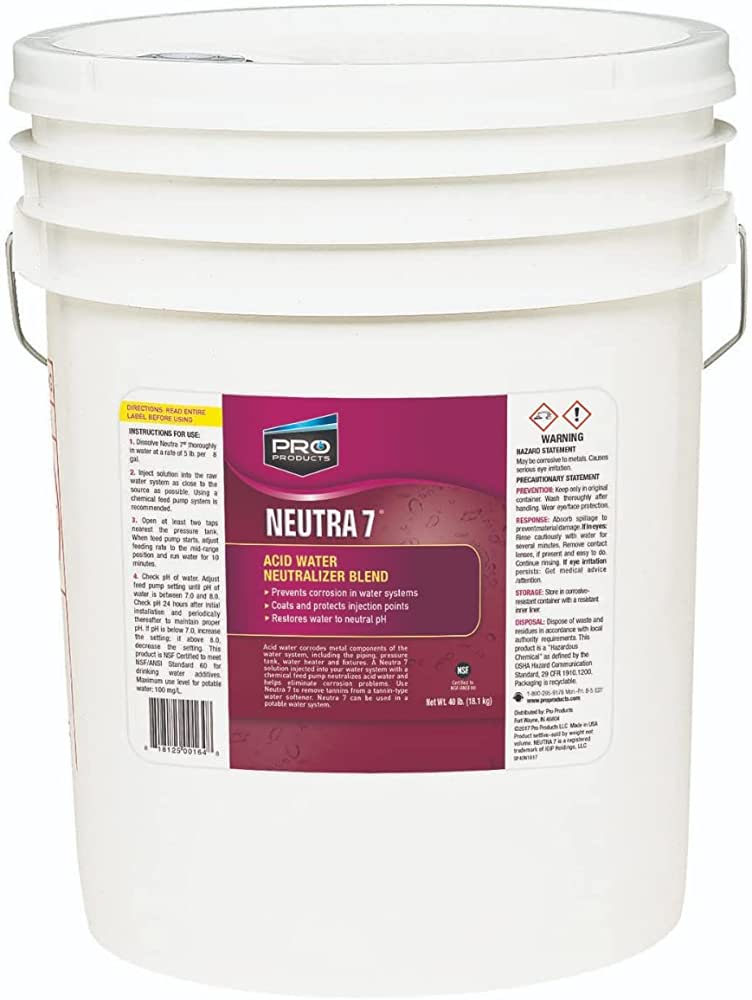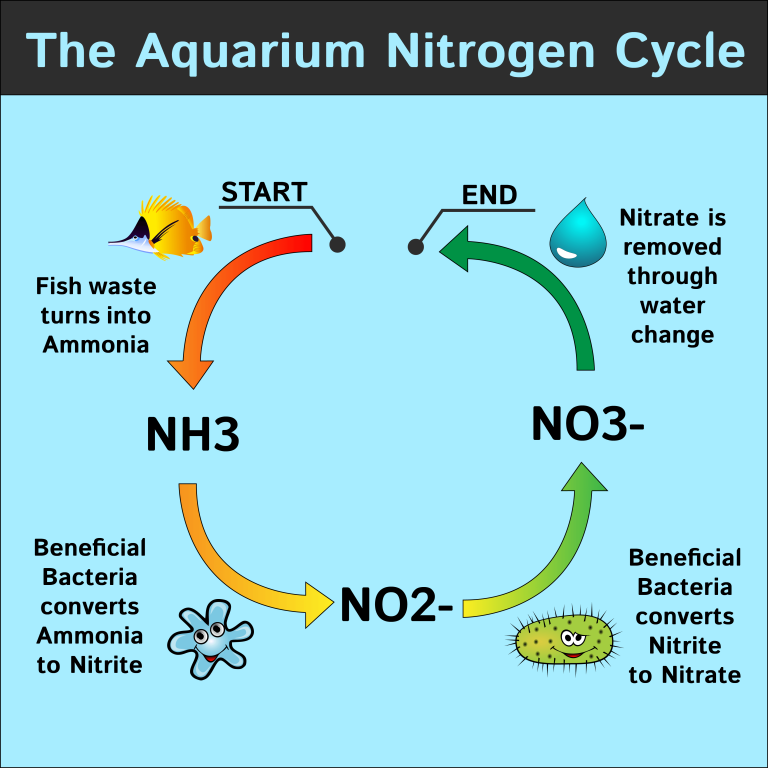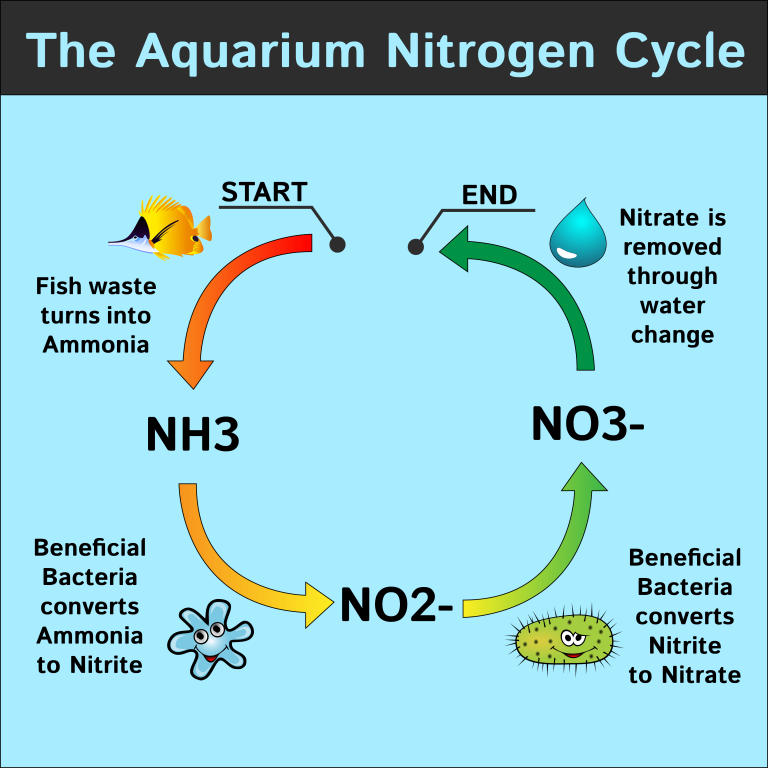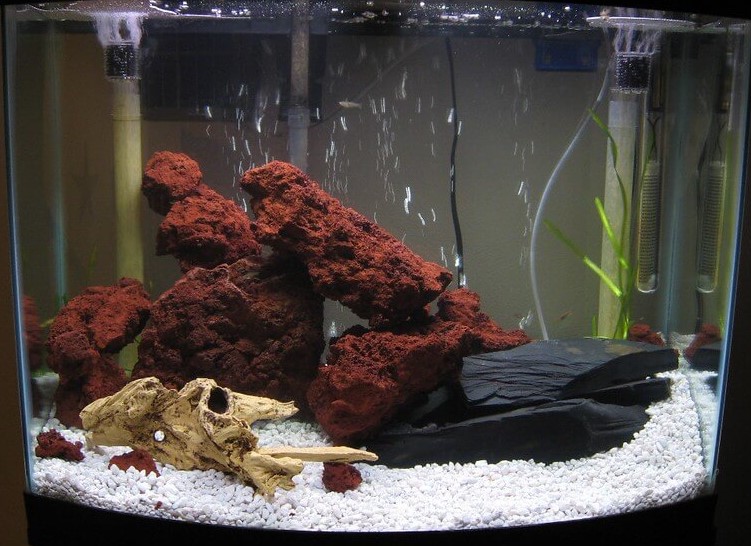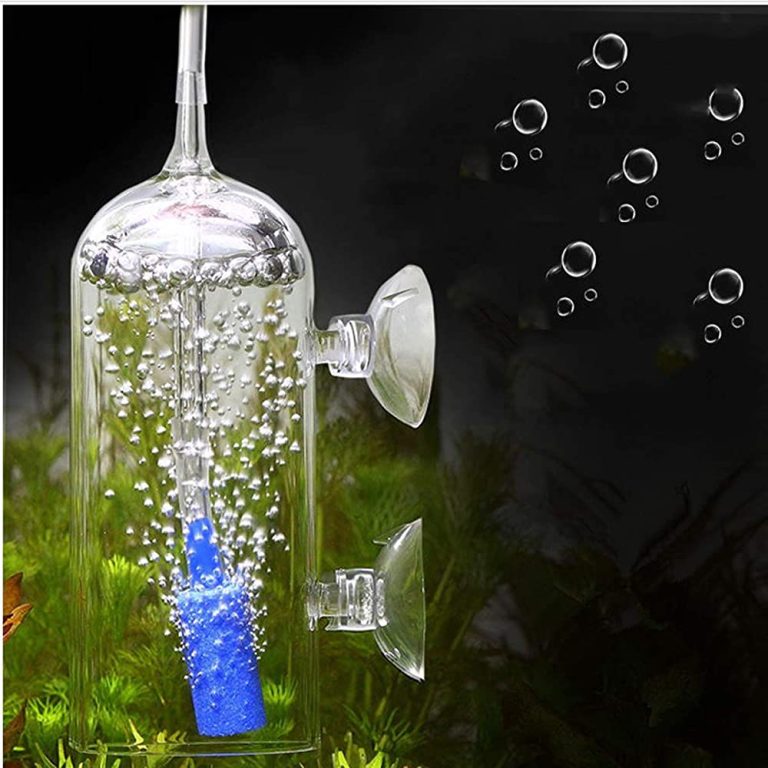10 Easy Steps to Lower Ph in Your Aquarium Today
To lower ph in an aquarium, use a ph decreaser or add driftwood or peat moss. These options are effective and safe.
Aquariums require specific conditions to ensure the health and well-being of aquatic life. One of these conditions is the ph level, which measures the acidity or alkalinity of the water. Maintaining the appropriate ph level is necessary for the survival of fish, plants, and other aquarium inhabitants.
Sometimes, the ph level may rise above or fall below the recommended range, causing stress and illness in aquatic life. In such cases, it is essential to lower the ph level quickly and effectively. This article offers useful insights into how to lower the ph in an aquarium to ensure a thriving, healthy aquatic environment.

Credit: www.thepioneerwoman.com
Step 1: Test The Current Ph Level
Testing The Current Ph Level Of The Aquarium Water
Maintaining the ph level of the aquarium water is crucial for the survival of aquatic organisms. Before taking any action, it’s essential to check the current ph level of the aquarium water using a ph testing kit. Here’s how you can accurately test the ph level:
- Purchase a reliable ph testing kit from a reputable pet store or online.
- Fill a test tube with aquarium water, making sure to only fill it up to the marked line.
- Add a few drops of ph testing solution to the water in the tube and shake it well.
- Hold the tube up against the color chart that comes with the kit, and compare the color of the water in the tube to the chart. This will determine the ph level of the aquarium water.
Remember, the ideal ph range for most aquariums is between 6. 5 and 7. 5.
Factors Affecting The Ph Level Of Aquarium Water
The ph level of aquarium water can be affected by several factors. Here are a few aspects to keep in mind:
- Quality of the water source: The quality of your tap water can impact the ph level of your aquarium water.
- Fish waste: Fish produce waste, which may increase the ph level of the water.
- Substrate: The type of substrate you use, such as coral or shells, can impact the ph level of the aquarium water.
- Plant matter: If you have live plants in your aquarium, they may affect the ph level of the water.
Why Lowering The Ph Level Is Necessary
If you have checked the ph level of your aquarium water and found it to be too high, it’s essential to consider lowering it. A high ph level can cause stress and illness in aquatic organisms. Here are some reasons why you may need to lower the ph level:
- To mimic the natural environment: Some species of fish and plants require a specific ph level to thrive. Lowering the ph level can create a suitable environment for them.
- To prevent algae growth: A high ph level can promote algae growth, which can be detrimental to the aquarium’s ecosystem.
- To reduce the toxicity of ammonia: A high ph level can increase the toxicity of ammonia, which can be harmful to aquatic organisms.
Testing the ph level of the aquarium water is the first step towards maintaining a healthy aquatic environment. By understanding the factors affecting ph levels and its importance, you can take the necessary measures to lower the ph level if needed.
Step 2: Identify The Cause Of High Ph
Identifying The Cause Of High Ph In Aquariums
Maintaining the ideal ph level in your aquarium is crucial for the survival of your aquatic pets. A high ph level can pose a significant threat to the health of your fish and other aquatic life. Therefore, it is essential to identify the root cause of this problem before diving into ways to lower it.
Discussing Common Causes Of High Ph Levels In Aquariums
Several factors can contribute to a high ph level in your aquarium. It is vital to be aware of these common causes to take prompt action against them. Here are some reasons for high ph levels in an aquarium:
- Overfeeding: Feeding your fish excessively can lead to an increased amount of organic matter in the water, which can consequently increase the alkalinity of the water.
- Lack of water changes: Failing to replace the water in your aquarium can cause a build-up of minerals and metals that can cause the ph level to spike.
- Excess waste: The accumulation of waste in your aquarium can trigger the growth of harmful bacteria that can increase the ph level.
Remember, an imbalance in the ph level can lead to the growth of pathogens that can cause health issues in aquatic life. Therefore, knowing the common causes of high ph levels in aquariums is crucial for maintaining a healthy environment for your fish.
By identifying the cause of the high ph in your aquarium, you can take the necessary steps to lower it. Frequent water changes, proper filtration, and regular cleaning of your aquarium can help prevent an increase in ph levels. Maintaining a stable and balanced ph level is crucial for the survival of your aquatic pets, and it’s your responsibility to ensure their well-being.
Step 3: Adjust The Water Hardness
How The Water Hardness Level Affects Ph Level In An Aquarium
The water hardness level in your aquarium can play a significant role in determining the ph level. If the water is too hard, you may find it challenging to lower the ph effectively. Similarly, if the water is too soft, the ph level will be unstable and prone to fluctuations.
So, it is essential to adjust the water hardness level to maintain a stable ph level. Here are some ways to do it.
Using Distilled Water
One of the best ways to adjust the water hardness level in your aquarium is to use distilled water. Distilled water is pure water with no dissolved minerals, making it perfect for lowering the water hardness level. However, you should not use it directly for your aquarium since it does not contain any essential minerals that your fish need to survive.
Adding Peat Moss
Peat moss is another effective way to lower the water hardness level in your aquarium. This natural material contains organic acids that can lower the ph level and soften the water. To use it, place some peat moss in a mesh bag and add it to your aquarium’s filter.
As the water passes through the bag, it will pick up some of the organic acids, lowering the water’s hardness level and ph level.
Using Specific Chemical Additives
There are various chemical additives available in the market that can help you adjust the water hardness level in your aquarium. These additives contain specific minerals that can either soften or harden the water, depending on your needs. However, you should be cautious about using these additives since some of them can harm your fish if not used correctly.
Therefore, it is essential to read the instructions carefully before using them.
Overall, adjusting the water hardness level can be a crucial step in maintaining a stable ph level in your aquarium. By using distilled water, adding peat moss or using specific chemical additives, you can effectively lower the water hardness level and ensure your fish live in a stable environment.
Step 4: Increase Aeration
Increase Aeration: Lower Ph Levels In The Aquarium
Aeration plays a crucial role in maintaining a healthy aquatic environment. It involves adding oxygen to the water, which not only helps improve the overall health of fish but also assists in lowering the ph levels in the aquarium.
Methods To Increase Oxygenation
Here are some methods you can use to increase the oxygen levels in your aquarium:
- Adding airstones: Airstones break up the surface of the water and help to create bubbles, which contribute to oxygenation. They can be placed anywhere in the aquarium and come in various sizes and shapes.
- Increasing water movement: You can use a water pump or powerhead to enhance water movement in the fish tank. This will create more surface agitation, leading to better oxygen exchange.
- Installing a filter: Filters are necessary for all aquariums and help with the biological filtration process. They can also promote water circulation and turbulence, resulting in an increase in oxygenation.
All of these methods work together to make the aquarium a healthier environment and can assist in lowering ph levels.
The Relationship Between Aeration And Ph Levels
Proper aeration can help naturally lower the ph levels in your aquarium by releasing carbon dioxide (co2), which can lower the ph. Co2 is naturally produced in aquariums by fish and gravel, among other things. If not released, co2 can build up and lower the ph levels, making the water more acidic.
By increasing aeration, you will release excess co2, allowing it to leave the aquarium, thus helping to stabilize the ph levels. However, it is important to monitor ph levels consistently, as increasing aeration alone may not significantly decrease ph levels.
By increasing aeration, you will not only keep your aquatic environment healthy, but you’ll also help to maintain optimal ph levels. Implementing the methods discussed above will ensure a successful and thriving aquarium ecosystem.
Step 5: Use An Acid Buffer
Lowering Ph Levels In Aquariums With Acid Buffers
Maintaining a healthy ph level in your aquarium is crucial for the well-being of your aquatic pets. However, there may come a time when the ph level needs to be lowered, and using an acid buffer can be a useful solution.
Here are key points to consider when introducing and using acid buffers to lower ph levels in your aquarium:
Types Of Acid Buffers
There are two main types of acid buffers that you can use in your aquarium. These are:
- Phosphate buffers: This type of buffer works by existing as a weak acid, and it can slowly release hydrogen ions into your aquarium water, lowering its ph level.
- Carbonate buffers: This buffer type works by introducing bicarbonate ions into the aquarium water, raising the water’s alkalinity while lowering its ph level.
Using Acid Buffers Safely
While using acid buffers can be an effective way to lower your aquarium’s ph, it’s important to use them safely. Here are some tips to help you:
-**follow the instructions:** follow the directions on the bottle when adding acid buffers to your aquarium. Overdosing can cause rapid ph level drops, which can be lethal to your aquarium inhabitants.
- Testing the ph levels: Always test your aquarium’s ph level before and after adding the acid buffer. This will help you determine how much of the buffer you should add and avoid overdosing.
- Spread out dosage: When using an acid buffer, it’s best to add it slowly over a period of days, rather than adding a large amount all at once. This will allow your aquarium inhabitants to adjust to the changes in ph levels gradually.
- Observe your aquarium’s inhabitants: When introducing acid buffers into your aquarium, keep an eye on your fish, and watch for any signs of stress, such as gasping or lethargy. If you notice any of these, stop using the buffer immediately.
Remember always that adjusting your aquarium’s ph level is not something that should be undertaken lightly. It’s essential to use appropriate products and follow the instructions carefully. By using acid buffers correctly, you can create a healthy and stable environment for your aquatic pets.
Step 6: Add Aquarium-Safe Chemicals
Discuss The Use Of Aquarium-Safe Chemicals Such As Ph Down Or Ph Decreaser, And The Method Of Adding Them Safely To The Aquarium.
One of the quickest and easiest ways to lower the ph level in your aquarium is to add ph down or ph decreaser. However, it is important to choose a product that is safe for your aquarium and follow the instructions correctly to avoid harming your aquatic pets.
Here are some key points to consider when using aquarium-safe chemicals:
- Choose a reputable brand of ph down or ph decreaser that is specifically designed for aquarium use. Avoid using household chemicals, as they can be harmful to fish and invertebrates.
- Read and follow the instructions on the label carefully. Pay attention to the dosage and make sure not to exceed the recommended amount. Overdosing can cause sudden ph drops, which can be fatal for fish.
- Test the ph level regularly to ensure that it does not drop too quickly. Small adjustments are better than large ones. It is recommended to lower the ph level by 0.2 each day until you reach the desired level.
- Add the ph down or ph decreaser gradually. It is best to add it to a high-flow area in your tank, such as near a powerhead or filter intake.
- Monitor your aquarium closely after adding the chemical. Observe your fish and invertebrates for any signs of stress or illness. If you notice any issues, perform a partial water change to dilute the chemical concentration.
Using aquarium-safe chemicals can be an effective method for lowering the ph level in your aquarium. However, it is important to use them correctly and to monitor your tank closely to avoid any negative impacts on your aquatic pets.
Step 7: Lower The Temperature
Lowering The Temperature: How It Affects Ph Levels In Aquariums
Maintaining optimal ph levels is crucial in keeping aquarium inhabitants healthy and happy. One often overlooked method of lowering aquarium ph levels is by lowering the temperature. Here’s how:
Method 1: Adjusting The Hvac System:
- Lowering the temperature of the aquarium room can help lower the temperature of the water. This method is ideal if your hvac system can regulate the temperature in the room where your aquarium is located.
- Make sure that your hvac system is working correctly, and the thermostat is accurate. Incorrect readings can cause fluctuations in the temperature, which can lead to ph level problems.
Method 2: Installing A Chiller:
- Chiller is a useful tool to help maintain the temperature of your aquarium water, especially during hot summer months. They work by removing excess heat from the water and then releasing it into the environment.
- Chiller installation requires a bit of work and may not be appropriate for all aquarium setups. Plus, they can be costly too.
Method 3: Adding Frozen Water Bottles:
- This method is ideal for small aquariums and temporary ph level fixes. Adding frozen water bottles to your aquarium can help lower the temperature of the water within minutes. However, this method takes constant monitoring because the temperatures can drop drastically.
- Make sure to control the temperature change slow and steady.
Lowering the temperature is a simple yet effective method to lower ph levels in your aquarium. Consider the appropriate method suitable for your setup, aquarium size, and budget. Always remember to make incremental changes to your aquarium temperature and ph level to keep your inhabitants happy and healthy.
Step 8: Perform Frequent Water Changes
Frequent water changes play a critical role in maintaining the optimum condition of your aquarium. By replacing a portion of the tank’s water, you can lower the ph level and provide a healthier environment for your aquatic pets. This post discusses the importance of frequent water changes and ways to perform them effectively.
Discuss Why Performing Frequent Water Changes Can Help Reduce Ph Levels
- Fish waste, decaying plants, and uneaten food can raise the ph level in your aquarium and make the water toxic for your pets. Frequent water changes can remove these impurities and stabilize the ph level.
- Water changes can also introduce fresh oxygen into the tank, which further boosts the health of your aquatic pets.
- Performing regular water changes assists in keeping the water clean and clear, which makes it easier to detect any issues and address them promptly.
Ways Of Performing General Evolution, Such As Replacing Up To 20 Percent Of The Water Or Performing Smaller, More Frequent Water Changes To Avoid Stress
- Experts recommend changing 10 to 20 percent of the water in your aquarium every two weeks. This percentage strikes a balance between maintaining a healthy environment and minimizing stress on your fish and plants.
- If you choose to perform smaller, more frequent water changes, ensure that you adjust the volume to account for the total water replacement. For example, if you plan to change 5% of the water every day, this will equate to a 35% weekly water replacement.
- Use a water conditioner when replacing water to reduce stress on your aquatic pets and plants. Chlorine and chloramines, found in most tap water, can irritate fish and alter the ph balance.
- Test the ph level more frequently when making frequent small water changes. Smaller changes are easier to make, and you will have more precise control over the ph level.
Frequent water changes are one of the best ways to manage the ph level in your aquarium and keep your aquatic pets happy and healthy. By following these tips, your aquarium will remain a safe and comfortable home for your pets.
Step 9: Monitor The Ph Level Regularly
Lowering the ph level in an aquarium can be a tricky task, but it’s an important aspect of maintaining a healthy tank. It’s essential to keep the ph level within a specific range to ensure your fish and plants thrive.
After following step 8, it’s time to monitor the ph level regularly.
Importance Of Keeping An Eye On Ph Levels And How Often To Test The Water.
Testing the water is the only accurate way to know the ph level in the aquarium. It’s crucial to test the water regularly, especially when you’ve made any changes to the aquarium.
Below are some essential points to keep in mind when testing the water:
- Test the water at least once a week.
- Perform a test before adding any new fish or plants and wait for 24 hours after adding new fish before testing.
- If you notice any unusual behavior in your aquarium, check the ph level.
Significance Of Maintaining The Ph Level In The Desired Range.
Maintaining the ph level in the desired range is crucial for the health and well-being of aquatic life. Below are some reasons why:
- The ph level changes the toxicity of ammonia, nitrite, and nitrate in the water.
- Fish and plants have adapted to certain ph ranges, and drastic changes can harm them.
- Stable ph levels prevent stress in aquatic life.
To maintain the ph level in the desired range, take the following steps:
- Regularly check ph levels and adjust when necessary.
- Use a buffer to stabilize ph levels, but do not rely on them entirely. Make adjustments as needed.
- When changing the water, make sure the new water has a similar ph level to the aquarium.
Keep in mind that sudden changes in the ph level can be stressful for fish and plants. Gradual changes over a few days or weeks are recommended.
Monitoring the ph level regularly is crucial to keep the aquarium healthy and ensure the safety of aquatic life. By taking the necessary steps to maintain the ph level in the desired range, you can ensure a thriving aquarium.
Step 10: Maintain A Balanced Aquarium
Maintaining A Balanced Aquarium: The Key To Successful Ph Level Control
To keep the ph level in your aquarium under control, it is not enough to make adjustments in the water’s chemical composition alone. Maintaining a balanced aquarium is equally important. A balanced aquarium ensures that natural remedies for ph control work to their fullest potential, thus creating a healthy and thriving ecosystem.
Importance Of Maintaining A Balanced Aquarium
Maintaining a balanced aquarium is vital for the health and happiness of aquatic life, and the tank’s overall well-being. For instance, if the nitrogen cycle is imbalanced, ammonia levels can rise, and the ph levels get compromised. If this happens, it will create stress and can lower fish’s immunity, making them susceptible to diseases.
Therefore, it’s crucial to establish a balanced ecosystem that helps regulate ph levels and maintains optimal water quality.
A balanced aquarium requires a proper understanding of the following:
- A stable nitrogen cycle that converts fish waste into beneficial nitrogen compounds
- The appropriate levels of dissolved oxygen and carbon dioxide to prevent ph fluctuations
- A diverse range of micro- and macro-organisms to support the ecological balance
- The right water temperature to support the aquatic life
Balancing An Aquarium’S Ecosystem
Balancing an aquarium’s ecosystem requires careful attention to detail, and it involves considering several components. If any one of these components is out of balance, it can affect the entire ecosystem. To create a balanced environment, it’s essential to:
- Establish the right ratio between plants and aquatic life to promote photosynthesis.
- Feed your fish the right amount of food to prevent overfeeding, which can lead to excess waste in the aquarium.
- Clean the tank periodically to remove uneaten food and debris.
- Check the ph levels regularly and make adjustments to keep anyone of them from increasing or decreasing beyond its limits.
- Use natural remedies to regulate ph if necessary and avoid harsh chemicals.
Wrap Up The Guide By Discussing The Significance Of Maintaining A Balanced Aquarium And What It Means To Balance An Aquarium’S Ecosystem.
A balanced aquarium is the key to regulating the ph levels in your tank and keeping aquatic life healthy and happy. It helps to maintain a natural and thriving ecosystem that enables fish, plants, and microorganisms to coexist naturally and in harmony.
Balancing an aquarium’s ecosystem requires careful attention to detail, and it involves several components that all work together. By establishing a balanced aquarium, you’ll be setting foundation for a happy tank and healthy aquatic life for years to come.
Frequently Asked Questions Of How To Lower Ph In Aquarium
How Can I Lower The Ph In My Aquarium?
To lower the ph in your aquarium, you can try several methods, including adding driftwood or peat moss, using chemicals like ph decreasers, or performing regular water changes with acidic water. It’s essential to monitor ph levels regularly and gradually adjust them to avoid stressing your fish.
What Are The Signs Of High Ph In An Aquarium?
High ph in an aquarium can be problematic for fish. Signs that your aquarium water ph is too high may include fish lethargy, gasping for air, or hiding away. Snail shells or coral may also appear damaged or corroded. A high ph can be dangerous, as it can make fish more susceptible to disease.
What Is The Ideal Ph Level For Aquarium Water?
Different types of fish have different ph level preferences, but a range between 6. 8 and 7. 5 is generally safe and suitable for most freshwater aquariums. Maintaining a stable ph level is more important than a specific number, and sudden alterations should be avoided.
Is Baking Soda A Useful Tool For Lowering Aquarium Ph?
While baking soda can be a useful tool for some aquarium situations, it’s not recommended for lowering ph in aquariums. Baking soda can increase ph, making it more difficult to maintain the correct level for aquarium fish. Instead, consider other methods like peat moss or a ph decreaser.
Should I Test My Aquarium Water Regularly?
Yes! Testing your aquarium water regularly is essential for maintaining a healthy environment for your fish. Water ph, ammonia, nitrate and nitrate levels should be checked regularly. Keeping track of these levels will help you diagnose problems early and avoid larger issues later.
Conclusion
Maintaining the ph level in an aquarium is crucial for the health and well-being of the aquatic life. It is essential to keep the ph levels within a safe range to ensure the fish and other aquatic creatures thrive. Lowering the ph level is essential to create a conducive environment for the fish, which will help keep them healthy and comfortable.
By understanding the factors that influence the ph level and using the appropriate methods to lower the ph levels, you can help create a safe and tranquil environment for your fish. Whether you’re a seasoned aquarium owner or just starting, lowering the ph level is a simple process that can be easily done with the right knowledge and tools.
Remember to take things slowly and test your aquarium before adding any more chemicals. By following these tips, you can achieve a healthy ph level in your aquarium and ensure the happiness of your aquatic pets.
